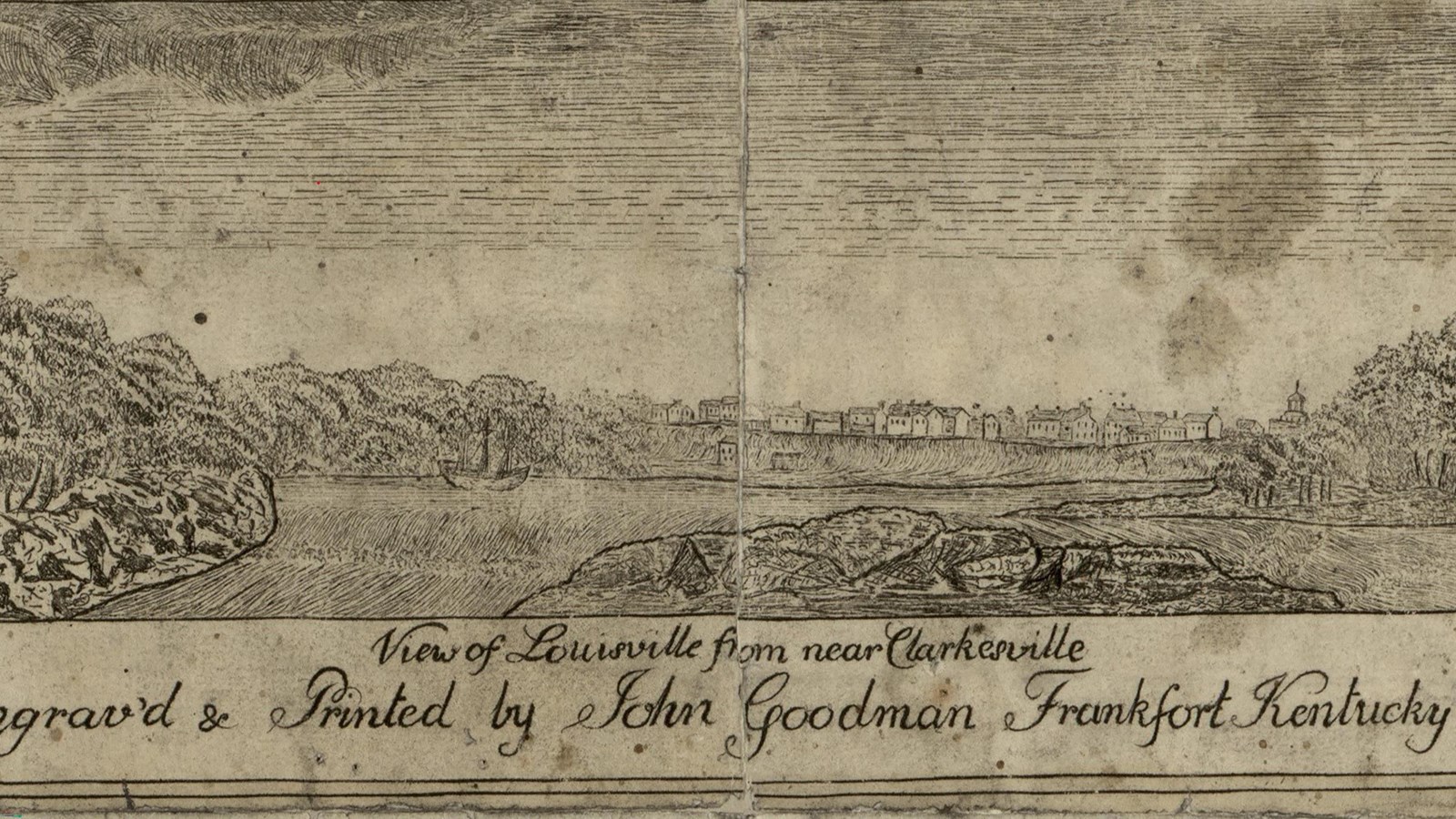Last updated: December 13, 2023
Place
Locust Grove, Kentucky

Jared Brooks, "A map of the rapids of the Ohio River and of the countries on each side thereof"
Gifts/Souvenirs/Books, Historical/Interpretive Information/Exhibits, Parking - Auto, Picnic Table, Restroom, Restroom - Accessible, Trailhead
Lewis and Clark NHT Visitor Centers and Museums
This map shows a range of features associated with the Lewis and Clark National Historic Trail, which commemorates the 1803-1806 Lewis and Clark Expedition. The trail spans a large portion of the North American continent, from the Ohio River in Pittsburgh, Pennsylvania, to the mouth of the Columbia River in Oregon and Washington. The trail is comprised of the historic route of the Lewis and Clark Expedition, an auto tour route, high potential historic sites (shown in black), visitor centers (shown in orange), and pivotal places (shown in green). These features can be selected on the map to reveal additional information. Also shown is a base map displaying state boundaries, cities, rivers, and highways. The map conveys how a significant area of the North American continent was traversed by the Lewis and Clark Expedition and indicates the many places where visitors can learn about their journey and experience the landscape through which they traveled.
William Clark’s sister and brother-in-law, Lucy Clark Croghan and William Croghan, built a house outside of Louisville around 1790. They named it Locust Grove, after the trees that grew nearby. The Clark-Croghans were wealthy and well-connected. Visitors to their house included James Monroe, Aaron Burr, and John J. Audubon. Many people lived at Locust Grove, as the Croghans enslaved about thirty-five individuals of African descent. These enslaved people built the estate’s houses and other buildings, did all the farming, and performed other labor as demanded by the Clark-Croghans.
William Clark and York grew up at nearby Mulberry Hill. This plantation was built and run by people enslaved by the Clarks—including York’s parents.
Clark and Meriwether Lewis left the Louisville area in 1803. They were gone for three years. No one knew if they were still alive or how the journey had gone.
When they finally arrived back in Louisville in 1806, Clark invited Lewis to stay with him at his sister’s home to rest and recuperate. They spent three weeks there. Settlers in Louisville had a party to welcome them back. York’s wife and family were surely happy to have him home, but their reunion was not recorded by local newspapers.
What had changed in Louisville while they were gone?
More American settlers farmed on the lands around Louisville—lands that until recently, Indigenous families had called home. There were likely more Black people in the area, since White settlers who moved here (like the Clarks) brought with them the people they enslaved.
The hard work of these enslaved individuals meant that the ports of Louisville were probably bustling even more—more goods to trade up and down the Ohio and Mississippi Rivers, from Pittsburgh down to New Orleans.
Would it have felt differently to Lewis, Clark, and York?
About this article: This article is part of a series called “Pivotal Places: Stories from the Lewis and Clark National Historic Trail.”
